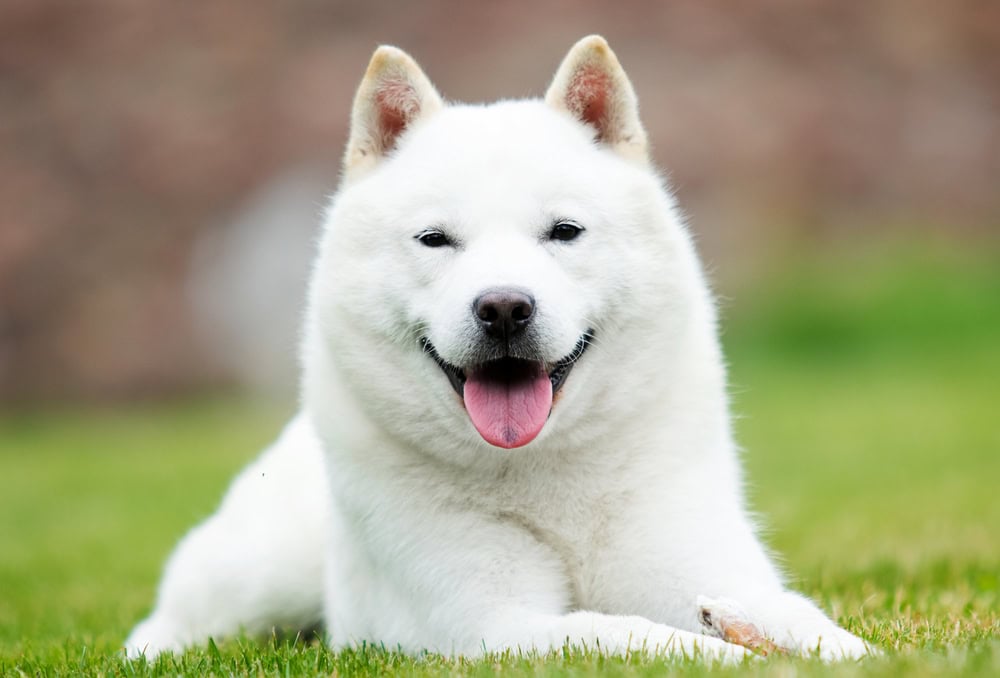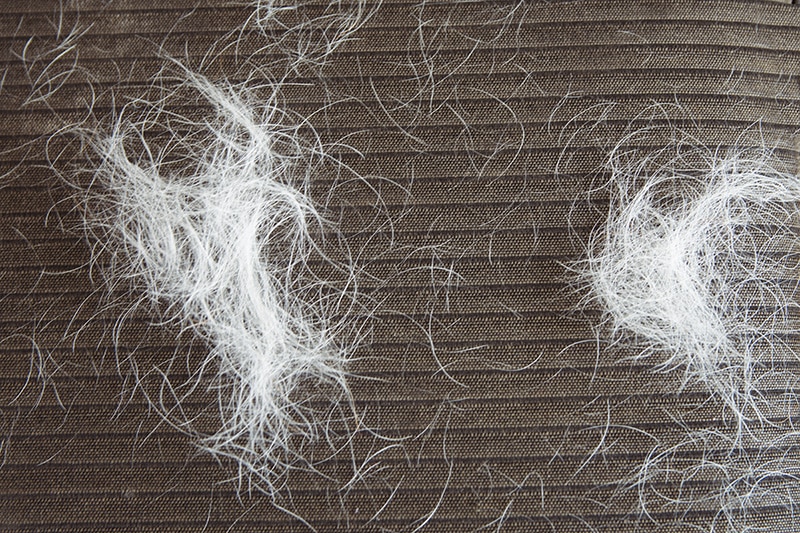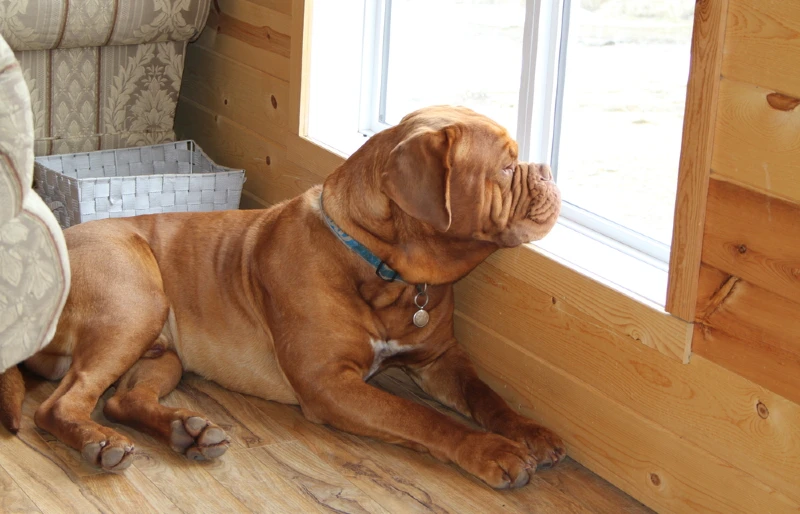Rhodesian Mastiff Mix: Care, Pictures, Info & More

Updated on
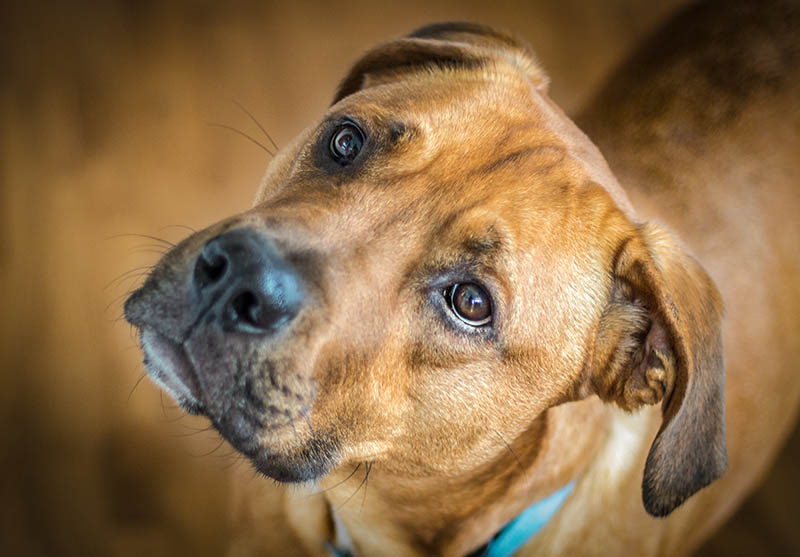
Click to Skip Ahead
There are so many hybrid breeds, that it’s almost impossible to know all of them. You might not have heard of the Rhodesian Mastiff Mix because they are one of the less popular crossbreeds, so let us introduce you to them!
This dog isn’t for the faint heart or the inexperienced dog owner, but they are fiercely loyal and affectionate toward their family. If you’re curious about learning more, here’s an overview of the breed.
Breed Overview
| Height: | 24–30 inches |
| Weight: | 70–230 pounds |
| Lifespan: | 6–12 years |
| Colors: | Apricot, brindle, fawn, wheaten (all shades) |
| Suitable for: | Experienced dog owners, apartments or homes with a yard, active families, families with older children |
| Temperament: | Protective, eager to please, sensitive, patient, even-tempered, courageous |
A mix of the Rhodesian Ridgeback and the Mastiff, the Rhodesian Mastiff is an adorable softie. Although they can be on the small side due to their Rhodesian Ridgeback parent, they’re equally likely to be massive dogs due to their Mastiff heritage.
Above all, this breed is an affectionate family dog. They’re not quite as friendly toward strangers, though, and inexperienced dog owners might find the amount of training that this breed needs to be intimidating. But in the right family, they are well-behaved, loyal, protective, and affectionate.
Rhodesian Mastiff Mix Characteristics
Rhodesian Mastiff Mix Puppies
Hybrid breeds are quickly gaining popularity, but some are more popular than others. You might find Rhodesian Ridgeback or Mastiff breeders in your area, but it might be more challenging to find breeders who specialize in crossbreeding the two.
Individually, the pedigree parents can cost anywhere between $800 and $2500 or more. If you do find a breeder who focuses on Rhodesian Mastiff Mix puppies, the fees might be cheaper due to the minimal demand for these dogs. Still, you should expect to pay several hundred or more for these dogs to cover the breeder’s expenses.
When it comes to the puppies themselves, don’t be fooled by their tiny size. They won’t stay that way for long, and training needs to start as soon as you bring them home. The Rhodesian Mastiff is intelligent and independent, and they need firm, consistent, and gentle guidance. Untrained adults can be aggressive and fearful toward strangers and situations that they’re unsure of.
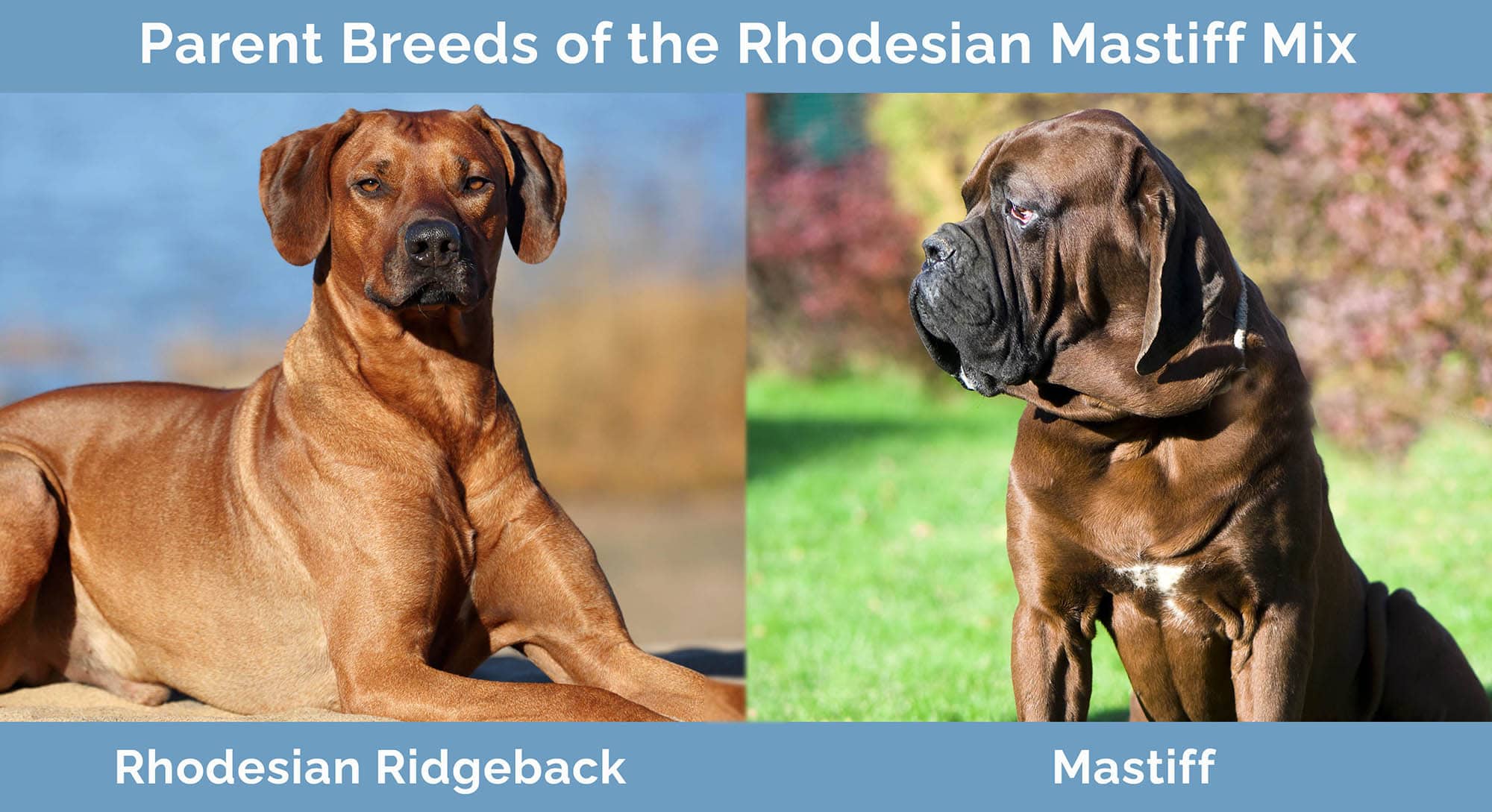
Temperament & Intelligence of the Rhodesian Mastiff Mix
Whether your Rhodesian Mastiff Mix is a giant like the Mastiff or smaller like the Rhodesian Ridgeback, they are loyal, affectionate, and protective. They are also family dogs and form powerful bonds with their owners once their trust is gained.
Although they are friendly, they are not for the faint of heart. These massive dogs are intimidating in their size, appearance, and training needs. They’re also intelligent, with an eagerness to learn that serves them well during training but also causes them to get bored easily. Once they start being stubborn, it can be incredibly difficult to convince them to do anything.
Are These Dogs Good for Families? 👪
The Rhodesian Mastiff can have an intimidating appearance, especially if they take after their Mastiff parent more than their Rhodesian Ridgeback parent. Despite their looks, though, they are gentle dogs that adore children. That said, all kids should be supervised when they’re with your Rhodesian Mastiff. They aren’t an aggressive breed toward children in their family, but they are big and heavy. Accidentally knocking smaller children down is a frequent problem for these kind-hearted companions.
In an active family with plenty of exercise, these dogs are adaptable and can even do well in apartments despite their size. However, they do need an experienced owner. Their size, training needs, and stubbornness aren’t well suited to an owner who’s never had dogs before.
Does This Breed Get Along With Other Pets?
Provided that you start socializing your Rhodesian Mastiff puppy as soon as possible, there’s no reason that they won’t get along with other pets in the house. They’ll match best with other dogs, but they can do well with cats and other pets. Growing up with another animal can help them learn to interact safely with all members of the family.
The problems start when these dogs aren’t socialized. For example, the Rhodesian Ridgeback has a high prey drive. They need to be kept on a leash whenever they’re outside the house unless they’re in a secure, fenced yard. This trait makes them and their crossbreed puppies prone to chasing other animals, but they’re also excellent companions to pets that they know and bond with.
In comparison, the Mastiff is generally friendly toward other pets. Regardless, never fall into the trap of assuming that your Rhodesian Mastiff doesn’t need training if they seem to get along with other pets. Socialization is a must.
Things to Know When Owning a Rhodesian Mastiff Mix
There are so many similarities between the Rhodesian Ridgeback and the Mastiff, it’s easy to assume that they have the same care needs. Where they differ, however, is what makes caring for your Rhodesian Mastiff an interesting challenge. It’s difficult to say which parent your puppy will take after the most, so here’s a general care guide to help you keep your Rhodesian Mastiff happy and healthy.
Food & Diet Requirements 🦴
This breed needs high-quality food that you can purchase from a pet store or make at home (with your vet’s approval). Always follow recommended recipes if you make dog food yourself. You can also discuss your Rhodesian Mastiff’s dietary needs with your veterinarian to ensure that you tailor their diet to their age, weight, and health.
Mastiffs are prone to bloat, a potentially fatal condition where the stomach expands and twists due to a build-up of gas and food. Split your Rhodesian Mastiff’s portions into smaller meals throughout the day, and avoid exercise immediately before and after eating..
Exercise 🐕
While the Mastiff is relatively sedate, the Rhodesian Ridgeback needs plenty of exercise. You’ll need to learn how much energy your Rhodesian Mastiff has, as it can vary greatly between the higher activity needs of the Ridgeback and the lazier Mastiff.
Mastiffs are also well known for their tendency to sit down and refuse to move if they’re bored or tired. If your puppy is on the heavy side, they’ll be difficult for you to carry, so plan your walks accordingly.
Both parent breeds are prone to joint dysplasia, so supporting their growth is vital. Avoid exercising them too much within their first 2 years to prevent unnecessary strain on their developing bones.
Training 🎾
They might make a loyal companion, but the Rhodesian Mastiff isn’t a dog for the inexperienced owner. The bond that they make with their owner is a strong one, and they are eager to please. However, their independence and easily bored nature make training efforts a challenge.
You need to be firm and consistent without relying on harsh corrections. Both the Rhodesian Ridgeback and the Mastiff can be surprisingly sensitive and are not shy about walking over you if they get the chance. Keeping their attention is crucial and requires patience and experience in dog training.
Socialization and obedience training from a young age isn’t something that you can skip out on. The Rhodesian Mastiff’s wariness around strangers and their protectiveness can lead to aggression toward other people and pets. You need to teach them how to behave or react to situations properly to prevent them from developing bad behavior. Puppy classes are highly recommended for these dogs.
Grooming ✂️
The Rhodesian Mastiff doesn’t need much grooming due to their short, dense coat. They do shed, but you only have to brush them once or twice a week to manage it. A reliable grooming mitt, curry comb, or bristle brush will help remove the loose fur from their coat and redistribute the natural oils to keep their skin and coat healthy.
They can inherit deep face wrinkles from their Mastiff parent, so always make sure to keep pet-safe wipes nearby to remove dirt and other debris from the skin folds. You also need to check their ears for signs of infection, brush their teeth to prevent dental issues, and trim their claws. Some Rhodesian Mastiffs might drool excessively too, so have a towel handy.
Health and Conditions 🏥
Large breeds are generally shorter lived than small breeds, but this doesn’t mean they aren’t healthy. The Rhodesian Mastiff Mix has a lifespan ranging from 6 to 12 years, depending on the parent that they take after the most.
Many of the conditions that the breed is prone to are well-known for affecting both the Rhodesian Ridgeback and the Mastiff. Reliable breeders who specialize in the parent breeds or the mixed puppies will always screen for known issues and give you a health history of the dogs.
- Allergies
- Skin infections
- Bloat
- Degenerative myelopathy
- Epilepsy
- Eye problems
- Joint dysplasia
Male vs. Female
Both male and female Rhodesian Mastiffs need training and socialization. The breed is loyal and affectionate toward their owner, and they have a fierce protective streak and a gentle nature toward children. They’re also full of playful energy.
Overall, the females are more territorial of their families than the males, though this doesn’t mean your male dog won’t jump to your defense when necessary. The females tend to be easier to train because the males are more prone to distraction. They can also be more stubborn and prone to ignoring instructions that they’re not interested in following.
In comparison, the males are usually the more active of the two sexes. They’re likely to seek you out for attention and playtime but can also be more dominant toward other dogs if they’re not socialized properly or neutered.
3 Little-Known Facts About the Rhodesian Mastiff Mix
The Rhodesian Mastiff isn’t one of the most popular hybrid breeds, and they’re also not that old compared to other mixed breeds. They’re an intriguing cross, though, especially when you consider the history surrounding their ancestors.
1. Their Ancestors Faced Lions
The Rhodesian Mastiff Mix is just as courageous as their parents. It would be hard to be otherwise when their ancestors on both sides were renowned for facing off against lions.
The Rhodesian Ridgeback was also known as the African Lion Hound, a name they earned due to their original purpose as big-game hunters. While their human companions lined up a shot, it was the Rhodesian Ridgeback’s task to distract the lion to keep their owners safe.
The Mastiff’s fights against lions happened in the Colosseum. During a Roman invasion of Britain in 55 B.C., Julius Caesar became enamored with the original Mastiffs that helped defend their home. Besides writing about them in his campaign journal, Caesar took several of the dogs to Rome, where they fought against lions, tigers, bears, and gladiators.
2. Obedience and Socialization Are Essential
There are two reasons that you can’t skip obedience and socialization training for your Rhodesian Mastiff puppy. For one thing, these dogs can get massive. Mastiffs can weigh up to 230 pounds, and while the Rhodesian Ridgeback will make the mixed puppies less hefty, the hybrid breed will still be a massive dog. Obedience training will help you maintain control when you need to, especially when you’re around people who are nervous around large dogs.
Second, you have to consider the natural wariness that the two breeds have toward strangers. They were both bred to be guardians and are naturally protective. As a result, the Rhodesian Mastiff is friendly and loyal to a fault toward their family but often standoffish toward people they don’t know. They’re excellent guard dogs but they need socialization to learn the difference between a friend and a threat.
3. They Might Be Related to Mastiffs on Both Sides
It’s difficult to say for sure which breeds were used to develop the Rhodesian Ridgeback. When the Boers first settled in Africa, they took many dog breeds with them. Mastiff-type dogs, Great Danes, and Greyhounds were among the many that were bred with the native Khoikhoi breed.
The Rhodesian Ridgeback wasn’t formally developed until the 19th century, but their early ancestors could include one of the original Mastiff-type dogs that the Boers introduced to Africa. This means it’s quite likely that the Rhodesian Mastiff Mix has the courageous Mastiff in their blood on both sides of the family.
Final Thoughts
Rhodesian Mastiff Mix dogs might not be that popular, but they are still excellent companions for experienced dog owners. They need a great deal of work from a young age, though, especially regarding obedience training and socialization.
While they form strong bonds with their family members, both parent breeds were bred for guarding and are naturally wary of strangers. This wariness can lead to aggression and fear if you don’t teach your dog how to interact with other people and animals.
They are excellent family dogs too, and they are calm toward adults and children in the family. You will need to be cautious about their size, as it can make them dangerous around younger children, but otherwise, they are the definition of “gentle giants.” If you’re looking for a loyal friend that isn’t afraid to protect you and your family when necessary and you’re not afraid of the extra work, the Rhodesian Mastiff Mix would be a perfect choice.
Featured Image Credit: JoshuaDaniel, Shutterstock



